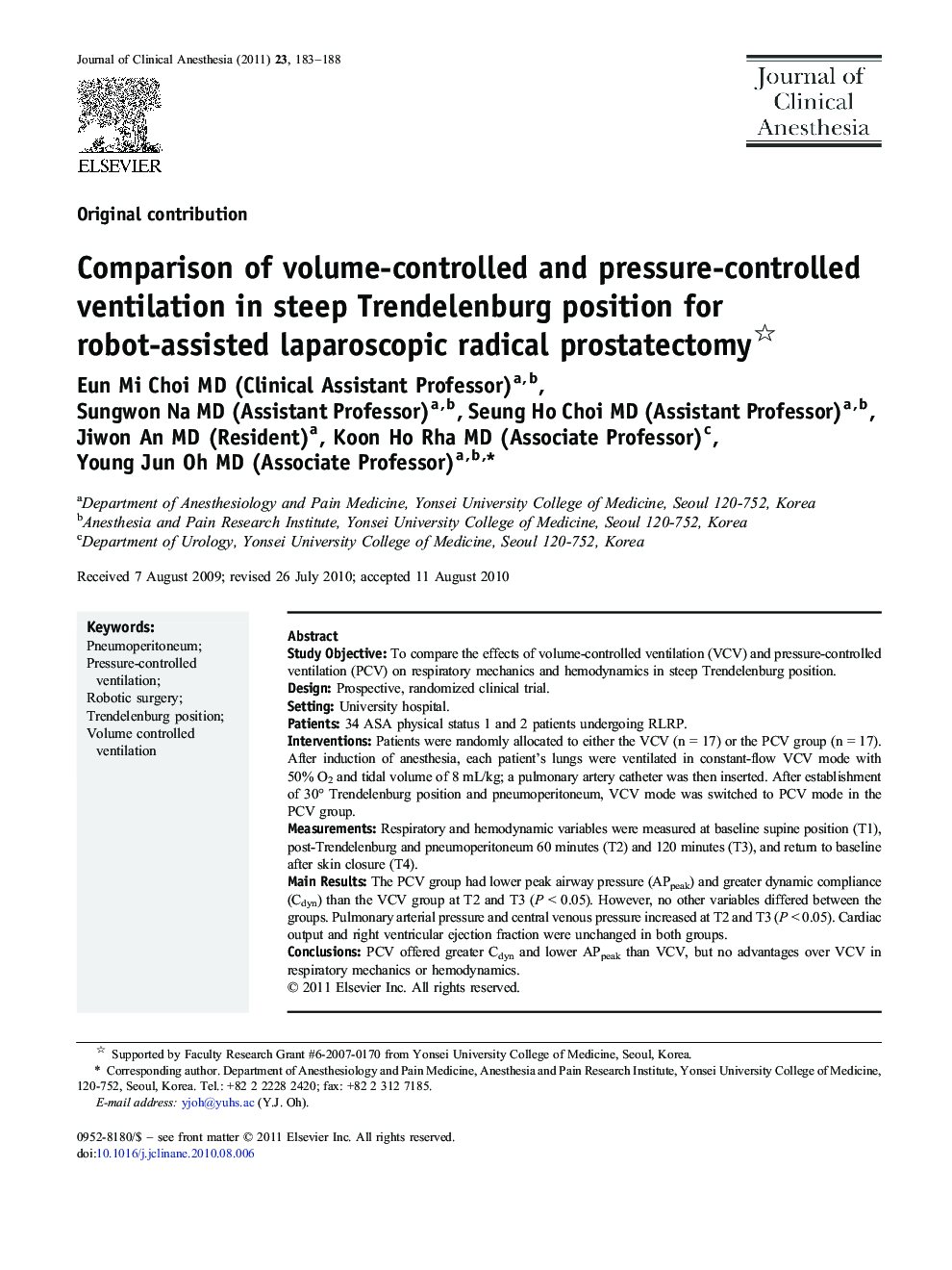| Article ID | Journal | Published Year | Pages | File Type |
|---|---|---|---|---|
| 2762798 | Journal of Clinical Anesthesia | 2011 | 6 Pages |
Study ObjectiveTo compare the effects of volume-controlled ventilation (VCV) and pressure-controlled ventilation (PCV) on respiratory mechanics and hemodynamics in steep Trendelenburg position.DesignProspective, randomized clinical trial.SettingUniversity hospital.Patients34 ASA physical status 1 and 2 patients undergoing RLRP.InterventionsPatients were randomly allocated to either the VCV (n = 17) or the PCV group (n = 17). After induction of anesthesia, each patient's lungs were ventilated in constant-flow VCV mode with 50% O2 and tidal volume of 8 mL/kg; a pulmonary artery catheter was then inserted. After establishment of 30° Trendelenburg position and pneumoperitoneum, VCV mode was switched to PCV mode in the PCV group.MeasurementsRespiratory and hemodynamic variables were measured at baseline supine position (T1), post-Trendelenburg and pneumoperitoneum 60 minutes (T2) and 120 minutes (T3), and return to baseline after skin closure (T4).Main ResultsThe PCV group had lower peak airway pressure (APpeak) and greater dynamic compliance (Cdyn) than the VCV group at T2 and T3 (P < 0.05). However, no other variables differed between the groups. Pulmonary arterial pressure and central venous pressure increased at T2 and T3 (P < 0.05). Cardiac output and right ventricular ejection fraction were unchanged in both groups.ConclusionsPCV offered greater Cdyn and lower APpeak than VCV, but no advantages over VCV in respiratory mechanics or hemodynamics.
